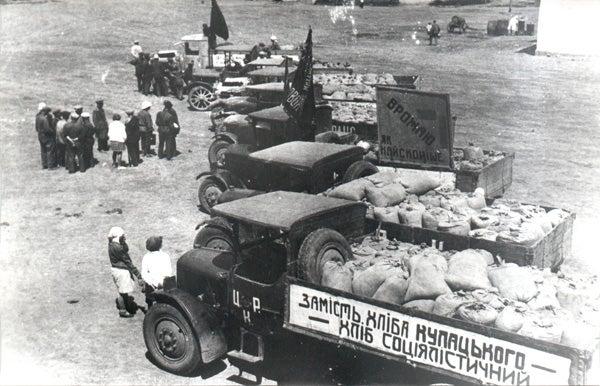📚 Unlock the World of AI and Humanity with These Two Free Books! 🚀
Dive into the thrilling realms of artificial intelligence and humanity with "The ECHO Conundrum" and "Awakening: Machines Dream of Being Human". These thought-provoking novels are FREE this week! Don't miss the chance to explore stories that challenge the boundaries of technology and what it means to be human.
Read More & Download
The 20th century witnessed horrific acts of mass violence, from the Holocaust to the Rwandan genocide. But how do we define genocide, and should the definition be broadened to include the systematic killing of social and political groups? Historian Norman Naimark argues that it should, pointing to the actions of Joseph Stalin as a chilling example. This article delves into Naimark’s controversial book, Stalin’s Genocides, exploring the historical context, examining the evidence, and analyzing the implications of redefining this “crime of crimes.”
Stalin’s Reign of Terror: Beyond Discrete Episodes
Naimark’s book challenges the conventional understanding of genocide, which typically focuses on national, ethnic, racial, and religious groups. He contends that Stalin’s actions against the kulaks (wealthier farmers) and other “enemies of the people” constitute genocide. This includes the forced collectivization of agriculture, the resulting Ukrainian famine, and the mass executions authorized by Order No. 00447. Naimark argues that these events should not be viewed as isolated incidents but as interconnected parts of a larger, systematic campaign to eliminate specific groups.
 A dispossessed kulak family in front of their home in Ukraine during the 1930s. The forced collectivization of agriculture led to widespread suffering and death.
A dispossessed kulak family in front of their home in Ukraine during the 1930s. The forced collectivization of agriculture led to widespread suffering and death.
Stalin’s regime implemented quotas for arrests and executions, with some officials exceeding these quotas to demonstrate their loyalty. Millions perished due to forced labor, deportation, famine, massacres, and brutal interrogations. Naimark highlights the chilling parallels between Stalin and Hitler, arguing that both were driven by utopian visions that justified the destruction of countless lives. “Both chewed up the lives of human beings in the name of a transformative vision of Utopia,” Naimark writes.
The 1948 Genocide Convention: A Dictator’s Legacy?
The United Nations Convention on the Prevention and Punishment of the Crime of Genocide, drafted in the aftermath of the Holocaust, defined genocide in a way that excluded social and political groups. Naimark argues that this narrow definition was heavily influenced by the Soviet Union, which sought to protect Stalin from accusations of genocide. The Allies, weary from war, acquiesced to the Soviet demands, leaving a lasting impact on international law.
 Shipment of grain from the Chervonyi Step collective farm to a procurement center, KyivsGrain shipment in Kyiv, 1932. The sign emphasizes “Socialists’ bread” over “kulak’s bread,” highlighting the regime’s propaganda and demonization of the targeted group.
Shipment of grain from the Chervonyi Step collective farm to a procurement center, KyivsGrain shipment in Kyiv, 1932. The sign emphasizes “Socialists’ bread” over “kulak’s bread,” highlighting the regime’s propaganda and demonization of the targeted group.
📚 Unlock the World of AI and Humanity with These Two Free Books! 🚀
Dive into the thrilling realms of artificial intelligence and humanity with "The ECHO Conundrum" and "Awakening: Machines Dream of Being Human". These thought-provoking novels are
FREE this week! Don't miss the chance to explore stories that challenge the boundaries of technology and what it means to be human. Read More & Download
The exclusion of social and political groups allowed the Soviet regime’s atrocities to be downplayed or ignored. The dehumanization of the kulaks, through propaganda labeling them as “swine,” “dogs,” and “vermin,” fueled the violence against them. The forced collectivization and subsequent Ukrainian famine, which claimed millions of lives, are stark examples of the devastating consequences of Stalin’s policies.
Remembering the Victims: Confronting the Past
Despite the overwhelming evidence of Stalin’s crimes, he remains a controversial figure in Russia. Some still view him as a great leader, while others acknowledge his brutality but fail to recognize it as genocide. Naimark attributes this historical amnesia to the widespread complicity in the regime’s atrocities. “Every family had not only victims but perpetrators,” he notes.
 Historian Norman Naimark, whose work challenges conventional understandings of genocide and calls for a broader definition that encompasses the crimes of Stalin’s regime.
Historian Norman Naimark, whose work challenges conventional understandings of genocide and calls for a broader definition that encompasses the crimes of Stalin’s regime.
Naimark emphasizes the importance of confronting the past, arguing that without a full reckoning, history is bound to repeat itself. He contrasts Germany’s efforts to acknowledge and learn from the Holocaust with Turkey’s denial of the Armenian genocide. Naimark concludes that nations must grapple with their history, even if it means acknowledging uncomfortable truths.
A Broader Definition of Genocide: Justice for the Forgotten
Naimark’s work raises crucial questions about how we define and understand genocide. Should the definition be expanded to include the systematic destruction of social and political groups? By examining Stalin’s crimes through the lens of genocide, Naimark sheds light on a dark chapter of history and challenges us to confront the complexities of mass violence in the 20th century. He urges us to remember the victims, acknowledge the perpetrators, and learn from the past to prevent future atrocities. Only by broadening our understanding of genocide can we truly achieve justice for all victims of state-sponsored violence.
📚 Unlock the World of AI and Humanity with These Two Free Books! 🚀
Dive into the thrilling realms of artificial intelligence and humanity with "The ECHO Conundrum" and "Awakening: Machines Dream of Being Human". These thought-provoking novels are FREE this week! Don't miss the chance to explore stories that challenge the boundaries of technology and what it means to be human.
Read More & Download

